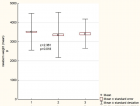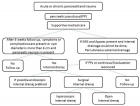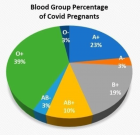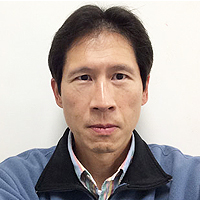Abstract
Research Article
Tooth erosion and the role of pepsin reflux
Jeanine Fisher, Graham Porter, Stuart Graham, Christos Ziaras, Andrew D Woodcock and Peter W Dettmar*
Published: 24 April, 2020 | Volume 4 - Issue 1 | Pages: 009-014
Objective: The purpose of the study was to evaluate if there is a link between salivary pepsin levels and tooth erosion. Also, to determine if gastroesophageal reflux disease (GERD) is responsible for much of the tooth erosion seen by dentists.
Background: Pepsin is only produced within the stomach. If found within other parts of the body [for example within saliva or sputum samples], the only mechanism by which that would be possible is via the reflux of gastric contents. One of the causes of dental erosion is thought to be due to direct contact between tooth surfaces and acidic substances and digestive enzymes present in gastric refluxate. GERD is a common condition, with its prevalence seemingly trending higher in recent decades. It is reportedly a known cause of tooth erosions. From the hypothesis, there was an expectation to see patients with dental erosions to have pepsin detected [and perhaps at high levels] and to see patients without dental erosions to have no or low levels of pepsin.
Method: Three saliva samples were collected [on waking and 2 post-prandial] from 50 anonymous participating patients (26 females, 24 males) from a single dental practice. Extra information was collected related to lifestyle, Reflux Symptom Index (RSI – reflux questionnaire) and tooth erosions. These samples were analyzed for the stomach enzyme pepsin using the validated medical device Peptest.
Results: There was no correlation between positive pepsin levels and the presence of tooth erosion during this study. There was a statistical difference between the on waking pH vs. positive pepsin levels and post prandial pH vs. positive pepsin levels. The average pH was lower for on waking and post-prandial samples with positive pepsin, suggesting that the saliva was acidic and gastric reflux had occurred. Conversely, the average pH was higher for on waking and post-prandial samples with negative pepsin. There was no statistical difference between pH vs. tooth erosion in the on waking and post- prandial.
Conclusion: Patients identified as having tooth erosion did not have higher levels of pepsin detected, suggesting that pepsin was not associated with dental erosion in these patients.
Read Full Article HTML DOI: 10.29328/journal.jcad.1001016 Cite this Article Read Full Article PDF
Keywords:
Pepsin; Dental; GERD; Peptest; Reflux; Tooth erosion
References
- Enam F, Mursalat M, Guha U, Aich N, Anik M, et al. Characterizing Dental Erosion Potential of Beverages and Bottled Drinking Water in Bangladesh. 4th International Conference on Chemical Engineering (ICChE); Dhaka, Bangladesh. 2014.
- Buzalaf MAR, Hannas AR, Kato MT. Saliva and dental erosion. J Appl Oral Sci. 2012; 20: 493-502. PubMed: https://www.ncbi.nlm.nih.gov/pubmed/23138733
- Fruton Joseph S. A History Of Pepsin And Related Enzymes. Q Rev Biol. 2002; 77: 127-147. PubMed: https://www.ncbi.nlm.nih.gov/pubmed/12089768
- Wilder-Smith CH, Materna A, Martig L, Lussi A. Longitudinal study of gastroesophageal reflux and erosive tooth wear. BMC Gastroenterol l. 2007; 17:113. PubMed: https://www.ncbi.nlm.nih.gov/pubmed/29070010
- Ranjitkar S, Kaidonis JA, Smales RJ. Gastroesophageal reflux disease and tooth erosion. International journal of dentistry. 2012; 479-‑ PubMed: https://www.ncbi.nlm.nih.gov/pmc/articles/PMC3238367/
- Belafsky PC, Postma GN, Koufman JA. Validity and reliability of the reflux symptom index (RSI), Journal of Voice: Official Journal of the Voice Foundation. 2002; 274-277. PubMed: https://www.ncbi.nlm.nih.gv/pubmed/12150380
- Darby ET. Dental Erosion and the Gouty Diathesis. Am J Dent Sci. 1892; 26: 352–355. PubMed: https://www.ncbi.nlm.nih.gov/pubmed/3074960 7
- Miller W. Experiments and observations on the wasting of tooth tissue visually variously designated as erosion, abrasion, chemical abrasion, denudation. The Dental Cosmos. 1907: 19: 731–734.
- Pickerill H. The prevention of dental caries and oral sepsis. London: Bailliere, Tindall & Cox. 1923: 140.
- Imfeld T. Dental erosion. Definition, classification and links. Eur J Oral Sci. 1996; 102: 151-155. PubMed: https://www.ncbi.nlm.nih.gov/pubmed/8804882
- Cengiz S, Cengiz MI, Saraç YS. Dental erosion caused by gastroesophageal reflux disease: a case report. Cases J. 2009; 2: 8018. PubMed: https://www.ncbi.nlm.nih.gov/pmc/articles/PMC2740145/
- El-Serag HB, Sweet S, Winchester CC. Update on the epidemiology of gastro-oesophageal reflux disease: a systematic review. Gut. 2014; 63: 871-880. PubMed: https://www.ncbi.nlm.nih.gov/pubmed/23853213
- Pace F, Pallotta S, Tonini M, Vakil N, Bianchi Porro G. Systematic review: gastro-oesophageal reflux disease and dental lesions. Aliment Pharmacol Ther. 2008; 27: 1179-1180. PubMed: https://www.ncbi.nlm.nih.gov/pubmed/18373634
- Heidelbaugh JJ, Gill AS, Van Harrison R, Nostrant TT. Atypical presentations of gastroesophageal reflux disease. Am Fam Physician. 2008; 78: 483-488. PubMed: https://www.ncbi.nlm.nih.gov/pubmed/18756656
- Bruno V, Amato M, Catapano S, Iovino P. Dental erosion in patients seeking treatment for gastrointestinal complaints: a case series. 2015. PubMed: https://www.ncbi.nlm.nih.gov/pubmed/26519024
- Bardhan KD, Strugala V, Dettmar PW. Reflux Revisited: Advancing the Role of Pepsin. Int J Otolaryngol. 2012; 1-13. PubMed: https://www.ncbi.nlm.nih.gov/pubmed/22242022
- Tonami K, Ericson D. Protein profile of pepsin-digested carious and sound human dentine. Acta Odontol Scand. 2005 Feb;63 (1):17-20. PubMed: https://www.ncbi.nlm.nih.gov/pubmed/16095057
- Kleter GA, Damen JJ, Buijs MJ, Ten Cate JM. The Maillard reaction in demineralized dentin in vitro. Eur J Oral Sci. 1997; 105: 278-284. PubMed: https://www.ncbi.nlm.nih.gov/pubmed/9249196
- Schlueter N, Ganss C, Hardt M, Schegietz D, Klimek J. Effect of pepsin on erosive tissue loss and the efficacy of fluoridation measures in dentine in vitro. Acta Odontol Scand. 2007; 65: 298-305. PubMed: https://www.ncbi.nlm.nih.gov/pubmed/18092202
- Bartlett DW, Evans DF, Anggiansah A, Smith BG. The role of the esophagus in dental erosion. Oral Surg Oral Med Oral Pathol Oral Radiol Endod. 2000 Mar;89(3):312-315. PubMed: https://www.ncbi.nlm.nih.gov/pubmed/10710455
- Du X, Wang F, Hu Z, Wu J, Wang Z, Yan C, et al. The diagnostic value of pepsin detection in saliva for gastro-esophageal reflux disease: a preliminary study from China. BMC Gastroenterol. 2017; 17: 1-9. PubMed: https://www.ncbi.nlm.nih.gov/pubmed/29041918
- Hayat JO, Gabieta-Somnez S, Yazaki E, Kang J-Y, Woodcock A, Dettmar P, et al. Pepsin in saliva for the diagnosis of gastro-oesophageal reflux disease. Gut. 2015; 64: 373-380. PubMed: https://www.ncbi.nlm.nih.gov/pubmed/24812000
- Ocak E, Kubat G, Yorulmaz I. Immunoserologic Pepsin Detection in The Saliva as a Non-Invasive Rapid Diagnostic Test for Laryngopharyngeal Reflux. Balkan Med J. 2015; 32: 46-50. PubMed: https://www.ncbi.nlm.nih.gov/pubmed/25759771
- Spyridoulias A, Lillie S, Vyas A, Fowler SJ. Detecting laryngopharyngeal reflux in patients with upper airways symptoms: Symptoms, signs or salivary pepsin? Respir Med. 2015; 109: 963-969. PubMed: https://www.ncbi.nlm.nih.gov/pubmed/26044812
- Johnston N, Dettmar PW, Ondrey FG, Nanchal R, Lee SH, Bock JM. Pepsin: biomarker, mediator, and therapeutic target for reflux and aspiration. Annals of the New York Academy of Sciences. 2018; 1433: 282-289. PubMed: https://www.ncbi.nlm.nih.gov/pubmed/29774546
- Wang YF, Yang CQ, Chen YX, Cao AP, Yu XF, et al. Validation in China of a non-invasive salivary pepsin biomarker containing two unique human pepsin monoclonal antibodies to diagnose gastroesophageal reflux disease. J Dig Dis. 2019; 20: 278-287. PubMed: https://www.ncbi.nlm.nih.gov/pmc/articles/PMC6851552/
- Dettmar P, Watson M, McGlashan J, Tatla T, Nicholaides A, Bottomley K, et al. A Multicentre Study in UK Voice Clinics Evaluating the Non-invasive Reflux Diagnostic Peptest in LPR Patients. SN Comprehensive Clinical Medicine. 2019; 2: 57-65.
- National Center for Biotechnology Information. Hydrochloric acid, CID=313. PubMed: https://pubchem.ncbi.nlm.nih.gov/compound/Hydrochloric-acid
Figures:
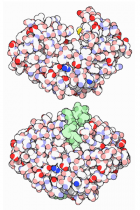
Figure 1

Figure 2

Figure 3

Figure 4

Figure 5
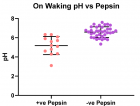
Figure 6
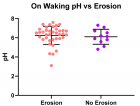
Figure 7
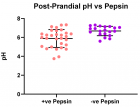
Figure 8
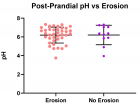
Figure 9

Figure 10

Figure 11
Similar Articles
-
“Bulls Eye For Bulls Teeth”- Endodontic Management of Taurodontism Using CBCT as A Diagnostic Tool- 2 Rare Case ReportsSapna Sonkurla,Manoj Mahadeo Ramugade*,Shubha Hegde,Gopal Tawani. “Bulls Eye For Bulls Teeth”- Endodontic Management of Taurodontism Using CBCT as A Diagnostic Tool- 2 Rare Case Reports. . 2017 doi: 10.29328/journal.hjd.1001002; 1: 005-011
-
Diagnosis and Treatment of Anterior Cracked Tooth: A Case ReportWellington Luiz de Oliveira Da Rosa,Lucas Pradebon Brondani,Tiago Machado Da Silva,Evandro Piva, Fernandes Da Silva*. Diagnosis and Treatment of Anterior Cracked Tooth: A Case Report. . 2017 doi: 10.29328/journal.hjd.1001003 ; 1: 012-020
-
The Neuromuscular diseases in Pediatric Dental OfficeAmbarkova Vesna*. The Neuromuscular diseases in Pediatric Dental Office. . 2017 doi: 10.29328/journal.hjd.1001004; 1: 021-025
-
How Condylar modifications occursRohit Kulshrestha*. How Condylar modifications occurs. . 2018 doi: 10.29328/journal.jcad.1001008; 2: 018-019
-
Colour keys to emotion in management of children and intellectual distraction using coloured games in dental environment for childrenRajakumar S*,Kavitha Ramar, Revanth MP. Colour keys to emotion in management of children and intellectual distraction using coloured games in dental environment for children. . 2019 doi: 10.29328/journal.jcad.1001009; 3: 001-003
-
Cranio-Facial Fibrous Dysplasia: A case report of a conservative treatment in a monostotic form associated with an orthodontic management and a bone graft of the non-lytic bone area for dental implant rehabilitationSeban A*,Blein E,Perez S,Seban B. Cranio-Facial Fibrous Dysplasia: A case report of a conservative treatment in a monostotic form associated with an orthodontic management and a bone graft of the non-lytic bone area for dental implant rehabilitation. . 2019 doi: 10.29328/journal.jcad.1001011; 3: 018-022
-
Trends in TeledentistryRudrakshi C*. Trends in Teledentistry. . 2020 doi: 10.29328/journal.jcad.1001014; 4: 004-005
-
Bifid Mandibular Canals: A case report and mini reviewSourav Sarkar*,Saini Mondal. Bifid Mandibular Canals: A case report and mini review. . 2020 doi: 10.29328/journal.jcad.1001015; 4: 006-008
-
Tooth erosion and the role of pepsin refluxJeanine Fisher,Graham Porter,Stuart Graham,Christos Ziaras,Andrew D Woodcock,Peter W Dettmar*. Tooth erosion and the role of pepsin reflux. . 2020 doi: 10.29328/journal.jcad.1001016; 4: 009-014
-
Behaviour management during dental treatment!!!Rohit Kulshrestha*. Behaviour management during dental treatment!!!. . 2020 doi: 10.29328/journal.jcad.1001017; 4: 015-016
Recently Viewed
-
Unusual Complications of a Dental Prosthesis Esophageal Foreign Body: About a CaseRichard Edward Alain Deguenonvo,Ndèye Fatou Thiam*,Mouhamadou Diouldé Diallo,Abdou Sy,Amadou Thiam,Abdoulaye Diop,Mame Sanou Diouf,Baye Karim Diallo. Unusual Complications of a Dental Prosthesis Esophageal Foreign Body: About a Case. Adv Treat ENT Disord. 2025: doi: 10.29328/journal.ated.1001016; 9: 001-004
-
Strengthening Healthcare Delivery in the Democratic Republic of Congo through Adequate Nursing WorkforceMin Kyung Shin, Tshibambe N Tshimbombu*. Strengthening Healthcare Delivery in the Democratic Republic of Congo through Adequate Nursing Workforce. Clin J Nurs Care Pract. 2024: doi: 10.29328/journal.cjncp.1001051; 8: 007-010
-
Chemical constituents and biological activities of Artocarpus heterophyllus lam (Jackfruit): A reviewSibi G*,Pranay Raja Bhad,Meeneri Vilas Bobde. Chemical constituents and biological activities of Artocarpus heterophyllus lam (Jackfruit): A review. Int J Clin Microbiol Biochem Technol. 2021: doi: 10.29328/journal.ijcmbt.1001019; 4: 005-009
-
The clinicopathological correlates of Cystoisosporiasis in immunocompetent, immunocompromised and HIV-infected/AIDS patients, but neglected in SARS-COV-2/COVID-19 patients?Chrysanthus Chukwuma Sr*. The clinicopathological correlates of Cystoisosporiasis in immunocompetent, immunocompromised and HIV-infected/AIDS patients, but neglected in SARS-COV-2/COVID-19 patients?. Int J Clin Microbiol Biochem Technol. 2021: doi: 10.29328/journal.ijcmbt.1001018; 4: 001-004
-
Explicating the presentations of Acanthamoeba keratitis with special concern in the COVID-19 pandemic ambientChrysanthus Chukwuma Sr*. Explicating the presentations of Acanthamoeba keratitis with special concern in the COVID-19 pandemic ambient. Int J Clin Microbiol Biochem Technol. 2021: doi: 10.29328/journal.ijcmbt.1001020; 4: 010-015
Most Viewed
-
Evaluation of Biostimulants Based on Recovered Protein Hydrolysates from Animal By-products as Plant Growth EnhancersH Pérez-Aguilar*, M Lacruz-Asaro, F Arán-Ais. Evaluation of Biostimulants Based on Recovered Protein Hydrolysates from Animal By-products as Plant Growth Enhancers. J Plant Sci Phytopathol. 2023 doi: 10.29328/journal.jpsp.1001104; 7: 042-047
-
Sinonasal Myxoma Extending into the Orbit in a 4-Year Old: A Case PresentationJulian A Purrinos*, Ramzi Younis. Sinonasal Myxoma Extending into the Orbit in a 4-Year Old: A Case Presentation. Arch Case Rep. 2024 doi: 10.29328/journal.acr.1001099; 8: 075-077
-
Feasibility study of magnetic sensing for detecting single-neuron action potentialsDenis Tonini,Kai Wu,Renata Saha,Jian-Ping Wang*. Feasibility study of magnetic sensing for detecting single-neuron action potentials. Ann Biomed Sci Eng. 2022 doi: 10.29328/journal.abse.1001018; 6: 019-029
-
Pediatric Dysgerminoma: Unveiling a Rare Ovarian TumorFaten Limaiem*, Khalil Saffar, Ahmed Halouani. Pediatric Dysgerminoma: Unveiling a Rare Ovarian Tumor. Arch Case Rep. 2024 doi: 10.29328/journal.acr.1001087; 8: 010-013
-
Physical activity can change the physiological and psychological circumstances during COVID-19 pandemic: A narrative reviewKhashayar Maroufi*. Physical activity can change the physiological and psychological circumstances during COVID-19 pandemic: A narrative review. J Sports Med Ther. 2021 doi: 10.29328/journal.jsmt.1001051; 6: 001-007

HSPI: We're glad you're here. Please click "create a new Query" if you are a new visitor to our website and need further information from us.
If you are already a member of our network and need to keep track of any developments regarding a question you have already submitted, click "take me to my Query."








